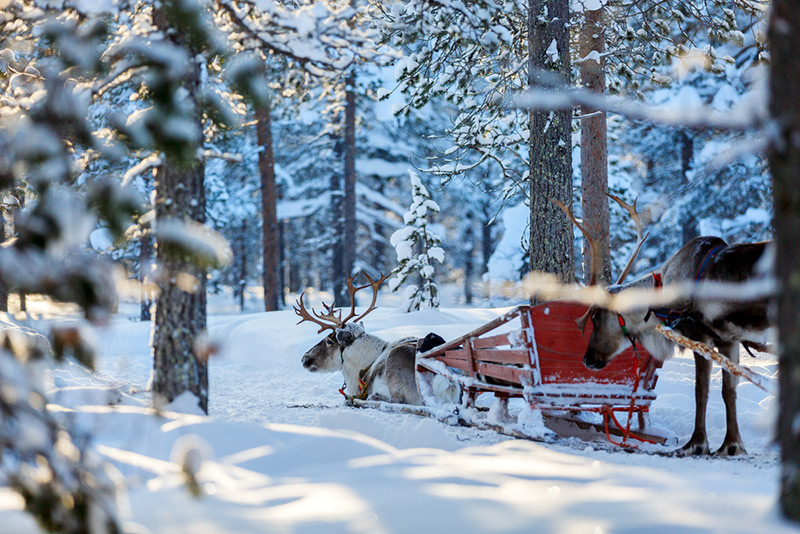
26th December 2016 Reindeer populations in sharp decline Reindeer are traditionally associated with the festive season, but these animals could be threatened with extinction in the future.
The world's biggest wild reindeer herd is reported to have declined by 40% since 2000, due to rising temperatures and human activity causing the animals to change their annual migration patterns. The herd, which lives on the Taymyr Peninsula in the far north of Russia, has been closely monitored for nearly 50 years by aerial surveys and, more recently, by satellite imagery. The herd's population peaked at around a million in 2000, but now stands at just 600,000. This new research was presented at the Fall Meeting of the American Geophysical Union (AGU). "There is a substantial decline – and we are also seeing this with other wild reindeer declining rapidly in other parts of the world," said Andrey Petrov, who runs the Arctic Centre at the University of Northern Iowa, US. "Climate change is at least one of the variables," explained Petrov. "We know in the last two decades that we have had an increase in temperatures of about 1.5°C overall. And that definitely impacts migration patterns." The animals are now shifting further north – as well as to higher altitudes – to find cooler ground and to avoid mosquitoes, which are booming due to warmer and wetter conditions. The expansion of industrial development in the region has also changed the animals' distribution. As a result, the herd is now forced to migrate for longer distances between summer and winter, which is difficult for newborn calves and has caused a rise in calf mortality. Climate change has also made rivers in the region grow larger and more dangerous for the animals to cross. Yet another factor is diminished food supplies in summer, especially as the reindeer move to higher elevations. "Reindeer are tremendously important for biodiversity. They are part of the Arctic food chain and without them, other species would be in trouble," says Petrov. Furthermore, this isn't just about the animal food chain, as they are vital for human survival, too: "Thousands and thousands of people rely on wild reindeer; it is the basis of their subsistence economy. So it's about human sustainability too."
A separate study this month reveals that reindeer in Norway have got smaller and lighter, due to diminishing food supplies. Speaking at the annual meeting of the British Ecological Society, held in Liverpool, scientists revealed that during a period of just 16 years – with noticeable summer and winter warming in the Arctic – reindeer on Svalbard declined in weight by an average of 12 percent. Ecologists from the James Hutton Institute, Norwegian Institute for Nature Research and the Norwegian University of Life Sciences have been catching, marking and measuring 10-month-old calves in the region every winter, returning each year to recapture them and track their size and weight as adults. Their survey shows that the reindeers' weight dropped from 55kg in 1994 to just 48kg for those born in 2010. Once again, climate change is primarily responsible for the shrinking reindeer, according to Professor Steve Albon, who led the research. In Svalbard, snow covers the ground for eight months of the year, and low temperatures typically limit grass growth to June and July. But as summer temperatures in the region have increased by 1.5°C, pastures have become more productive, allowing female reindeer to gain more weight by the autumn and therefore conceive more calves, Albon explains. Warmer winters, however, mean more rain. The rain lands on snow, where it freezes solid, locking-out the reindeer from food beneath the snow. The result is that reindeer starve, aborting their calves or giving birth to much lighter young. These changes could spell disaster for this iconic Christmas species, Albon warns: “The implications are that there may well be more smaller reindeer in the Arctic in the coming decades – but possibly a risk of catastrophic die-offs because of increased ice on the ground.” ---
Comments »
|








